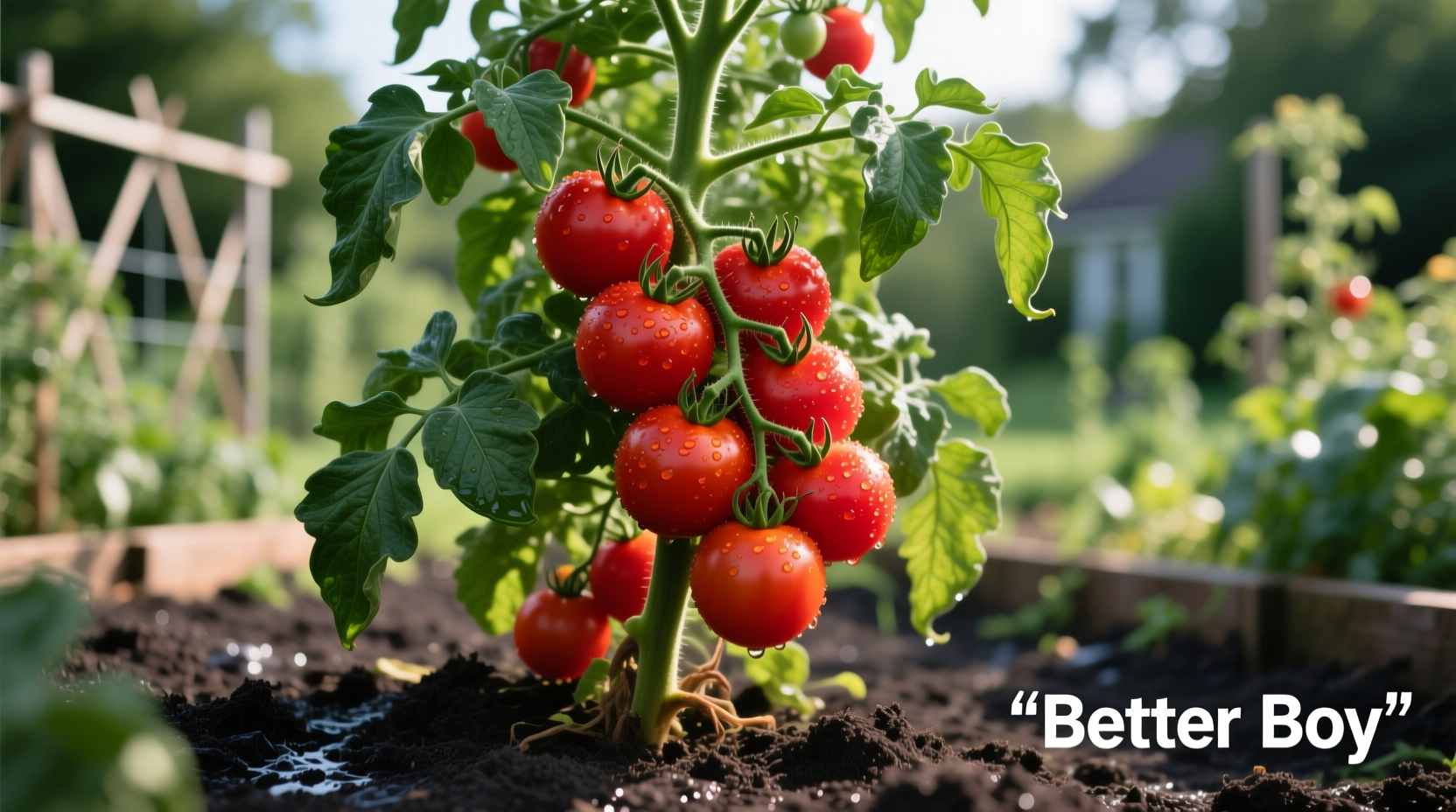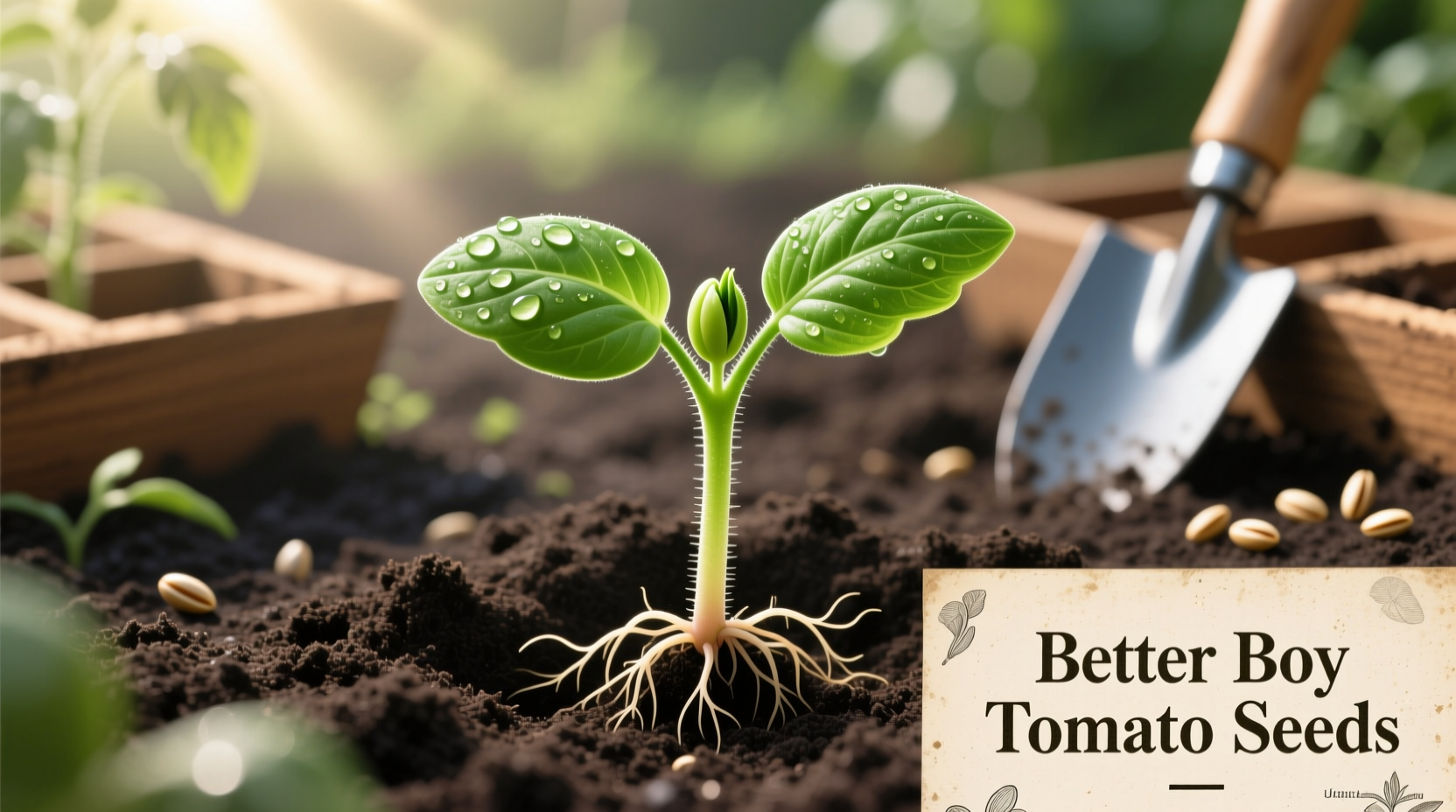For decades, gardeners have turned to Better Boy tomato seeds when they want dependable performance and classic tomato flavor. This hybrid variety consistently delivers what home growers need: vigorous plants, high yields, and resistance to common tomato diseases that plague many other varieties. Whether you're a beginner gardener or have years of experience, Better Boy offers a satisfying growing experience with results you can count on.
Why Better Boy Tomato Seeds Stand Out in Your Garden
Developed in 1943 by W. Atlee Burpee & Co., Better Boy quickly became a garden favorite for good reason. Unlike many heirloom varieties that require intensive care, this hybrid combines the best traits of its parent plants to create a robust tomato that handles common garden challenges with ease. The "VFN" designation on Better Boy seed packets indicates its triple resistance to Verticillium wilt, Fusarium wilt, and root-knot nematodes—three of the most destructive tomato diseases.
According to research from the USDA Agricultural Research Service, tomato varieties with these resistance traits show significantly higher survival rates in disease-prone soils. Better Boy's disease resistance means you'll spend less time treating problems and more time harvesting tomatoes.
What to Expect From Your Better Boy Tomato Plants
Better Boy produces large, globe-shaped tomatoes averaging 10-12 ounces each with a deep red color and smooth, crack-resistant skin. The indeterminate growth habit means plants continue producing throughout the season, not just in one big flush. You'll typically see your first ripe tomatoes 72-80 days after transplanting.
| Characteristic | Better Boy | Big Boy | Early Girl |
|---|---|---|---|
| Maturity | 72-80 days | 70-75 days | 50-52 days |
| Fruit Size | 10-12 oz | 8-12 oz | 6-8 oz |
| Disease Resistance | V, F, N | V, F | V, F, TMV |
| Growth Habit | Indeterminate | Determinate | Indeterminate |
| Best For | All-purpose | Slicing | Early harvest |
Step-by-Step Growing Guide for Success
Starting Seeds Indoors
Begin Better Boy seeds indoors 6-8 weeks before your last expected frost date. The University of Minnesota Extension recommends maintaining soil temperatures between 70-80°F (21-27°C) for optimal germination. Use a quality seed starting mix in individual containers to prevent root disturbance when transplanting.
Transplanting to Your Garden
Wait until nighttime temperatures consistently stay above 55°F (13°C) before moving plants outdoors. Space Better Boy plants 24-36 inches apart in rows 3-4 feet apart—they need room to spread. Unlike determinate varieties, Better Boy's indeterminate growth means it will continue growing throughout the season, requiring sturdy support.

Watering and Feeding Schedule
Consistent moisture is crucial for preventing blossom end rot, a common tomato problem. Water deeply 1-2 times per week rather than frequent shallow watering. The University of California Agriculture and Natural Resources recommends applying 1-2 inches of water weekly, adjusting for rainfall. Feed with a balanced fertilizer when first planting, then switch to a low-nitrogen, high-phosphorus formula when flowers appear.
Pest and Disease Management
While Better Boy has excellent disease resistance, proper cultural practices further protect your plants. Rotate crops annually, avoid overhead watering, and remove lower leaves that touch soil. If you notice yellowing between leaf veins, this indicates magnesium deficiency—solve with Epsom salt spray (1 tablespoon per gallon of water).
When Better Boy Performs Best (and When to Choose Alternatives)
Better Boy excels in most temperate climates but has specific conditions where it truly shines:
- Ideal conditions: Full sun (6-8 hours daily), well-drained soil with pH 6.2-6.8, consistent moisture
- Challenges: Performs poorly in extremely hot climates (above 90°F/32°C consistently) where fruit set may decrease
- Best regions: Thrives in USDA zones 5-10, particularly in the Midwest and Northeast where disease pressure is higher
- Alternative varieties: In very hot climates, consider heat-tolerant varieties like Solar Fire or Heatmaster
Harvesting and Using Your Better Boy Tomatoes
Pick tomatoes when they've developed full color but are still slightly firm—this ensures peak flavor development while preventing over-ripening on the vine. Better Boy's thick skin makes these tomatoes excellent for canning, sauces, and fresh slicing. The balanced sweet-tart flavor works well in salads, sandwiches, and classic tomato dishes.
For the best flavor, store harvested tomatoes at room temperature away from direct sunlight. Refrigeration diminishes flavor compounds—only refrigerate if you must extend shelf life beyond a few days.
Proven Tips for Maximum Yield
Experienced gardeners know these techniques make the difference between good and exceptional harvests:
- Deep planting: Bury stems up to first set of leaves when transplanting—roots will form along buried stem
- Proper pruning: Remove suckers below first fruit cluster but allow 2-3 main stems for maximum production
- Mulching: Apply 2-3 inches of organic mulch to maintain consistent soil moisture and temperature
- End-of-season boost: When first fall frost threatens, remove small green fruit and top the plant to direct energy to ripening existing tomatoes











 浙公网安备
33010002000092号
浙公网安备
33010002000092号 浙B2-20120091-4
浙B2-20120091-4